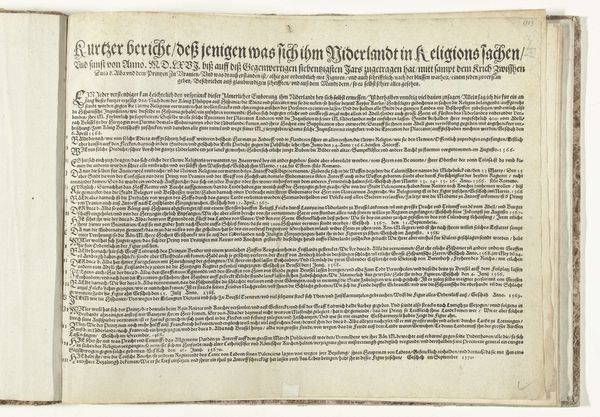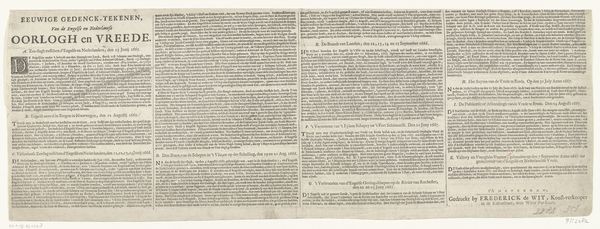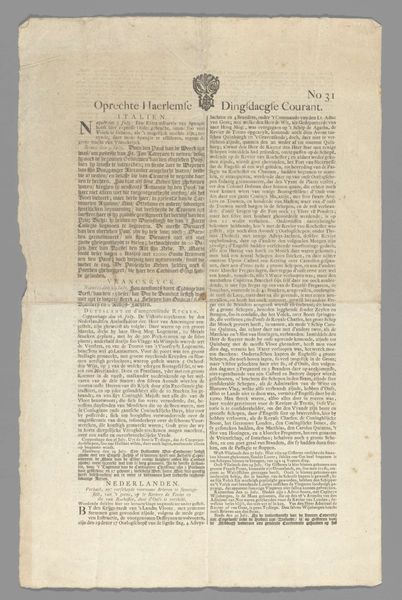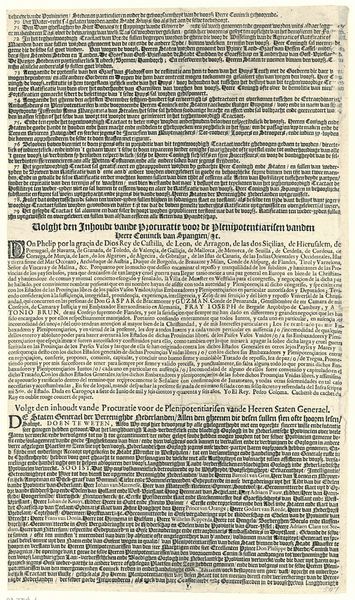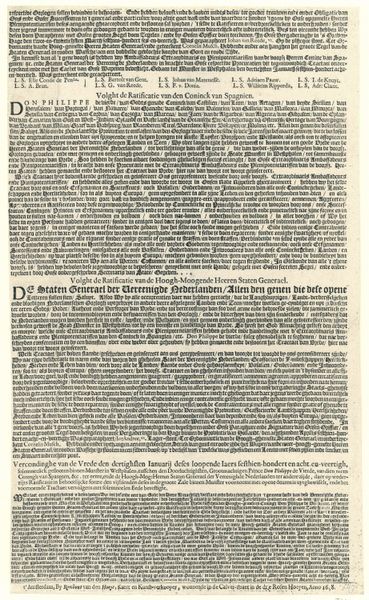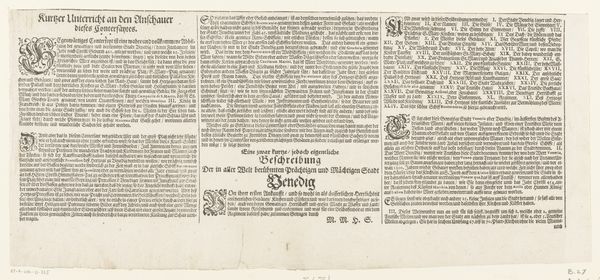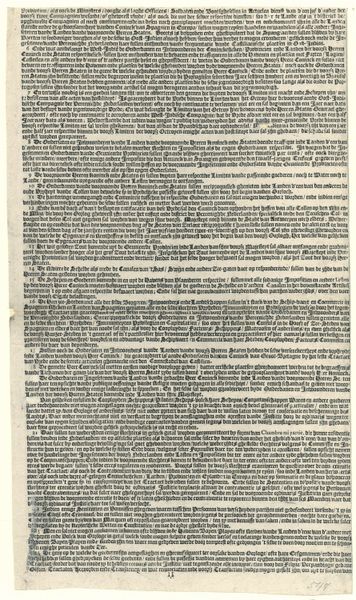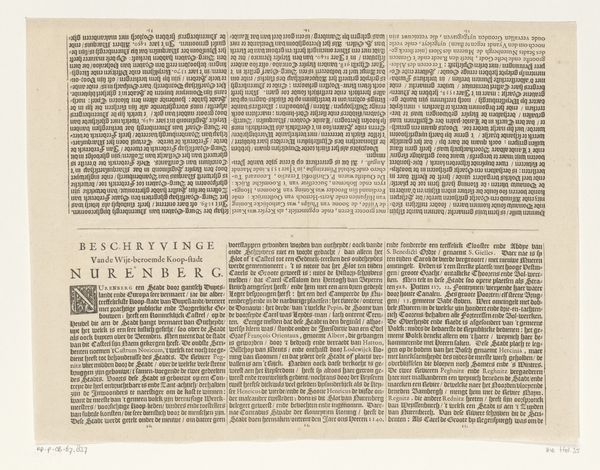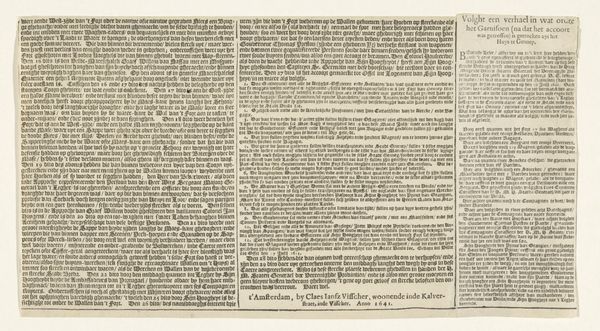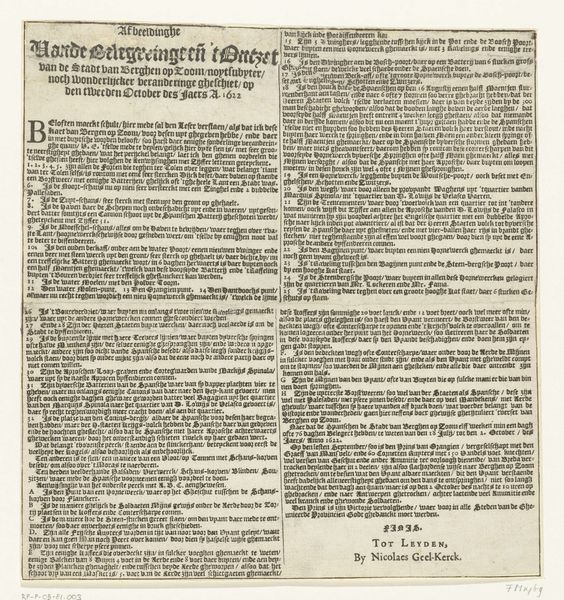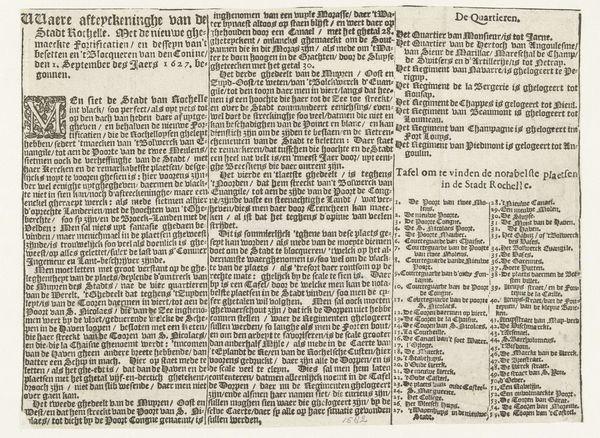
Titelblad voor de reeks prenten over de gebeurtenissen in de Nederlanden 1566-1570 1570
0:00
0:00
print, textile, paper
#
narrative-art
# print
#
textile
#
paper
#
islamic-art
#
history-painting
Dimensions: height 240 mm, width 350 mm
Copyright: Rijks Museum: Open Domain
Curator: This fascinating page, housed at the Rijksmuseum, is the "Title Page for the series of prints about events in the Netherlands 1566-1570" by Frans Hogenberg, dating back to 1570. Editor: It’s almost overwhelming, isn’t it? My first thought is of information overload—so dense and compact! You know, it feels almost claustrophobic, a stark representation of the tight control exerted over communication at the time. Curator: It’s a broadside, essentially a printed news sheet. Notice how the text, almost like a tapestry, dominates. Consider that textiles often bore potent symbols during that period, implying a woven narrative that demands careful unpicking. Editor: Woven is a good analogy! It certainly presents a specific, undeniably partisan perspective on events in the Netherlands, especially religious affairs. Who was the audience Hogenberg intended to reach, and what biases would they have brought? Curator: Primarily a literate, politically engaged public across Europe. Broadside allowed information to be disseminated relatively quickly and widely. Now, observe the very precise arrangement. The density of the text block itself acts as a powerful visual statement—authority and completeness rendered materially. Editor: That presumed authority comes at the cost of accessibility. For the average person caught up in those events, faced with these long dense paragraphs, deciphering must have been very complicated. Is it a form of deliberate obfuscation under the guise of information? Curator: That's a stimulating perspective. Consider also the absence of illustrations here. Hogenberg perhaps viewed this historical moment through a fundamentally textual and symbolic lens. Each carefully chosen phrase served to evoke vivid imagery within the reader's mind. Editor: Right, relying on cultural and emotional baggage loaded onto words and phrases. Given the context of religious upheaval, what ideological conflicts would surface just from the careful wording in this broadside? Curator: Examining Hogenberg’s work allows us to untangle the intertwined threads of cultural memory and political action within Reformation-era Europe. Editor: It offers us a tangible reminder of the complex relationship between power, representation, and the lived realities of individuals navigating turbulent times.
Comments
No comments
Be the first to comment and join the conversation on the ultimate creative platform.
